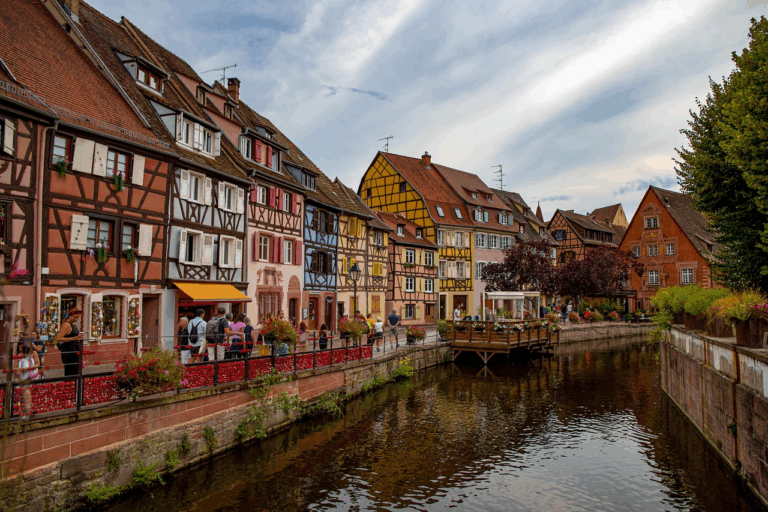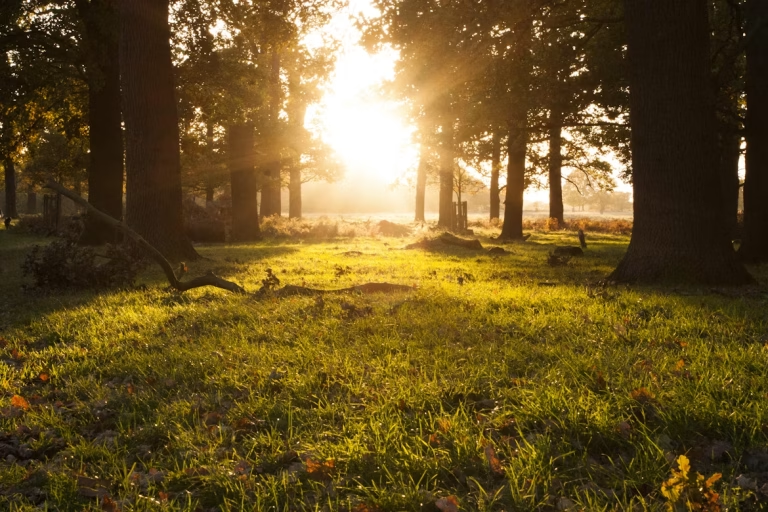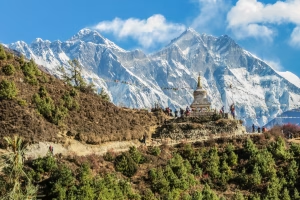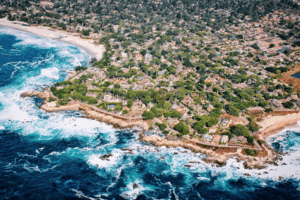
The villages in the Italian Alps represent some of Europe’s most enchanting destinations, where medieval architecture meets pristine alpine landscapes. These nine traditional settlements offer travelers an authentic glimpse into centuries-old mountain culture, far from the crowded tourist trails that dominate other European destinations.
Nestled among towering peaks and crystalline lakes, these villages in the Italian Alps have preserved their unique identity through generations of careful stewardship. From the stone archways of medieval settlements to the Gothic churches that dot pastoral valleys, each destination tells a story of alpine heritage that continues to captivate visitors from around the world.
What Makes Villages in the Italian Alps Special?
The villages in the Italian Alps stand apart from typical mountain destinations due to their remarkable preservation of traditional architecture, vibrant local cultures, and stunning natural settings. Unlike commercialized ski resorts, these settlements maintain their authentic character through active local communities that celebrate age-old traditions and crafts.
These alpine communities offer visitors the opportunity to experience the slower pace of mountain life while enjoying world-class hiking, traditional cuisine, and architectural marvels that have stood the test of time. The combination of cultural richness and natural beauty makes these villages in the Italian Alps irresistible to travelers seeking genuine experiences.
The 9 Most Beautiful Villages in the Italian Alps
1. Fodara Vedla
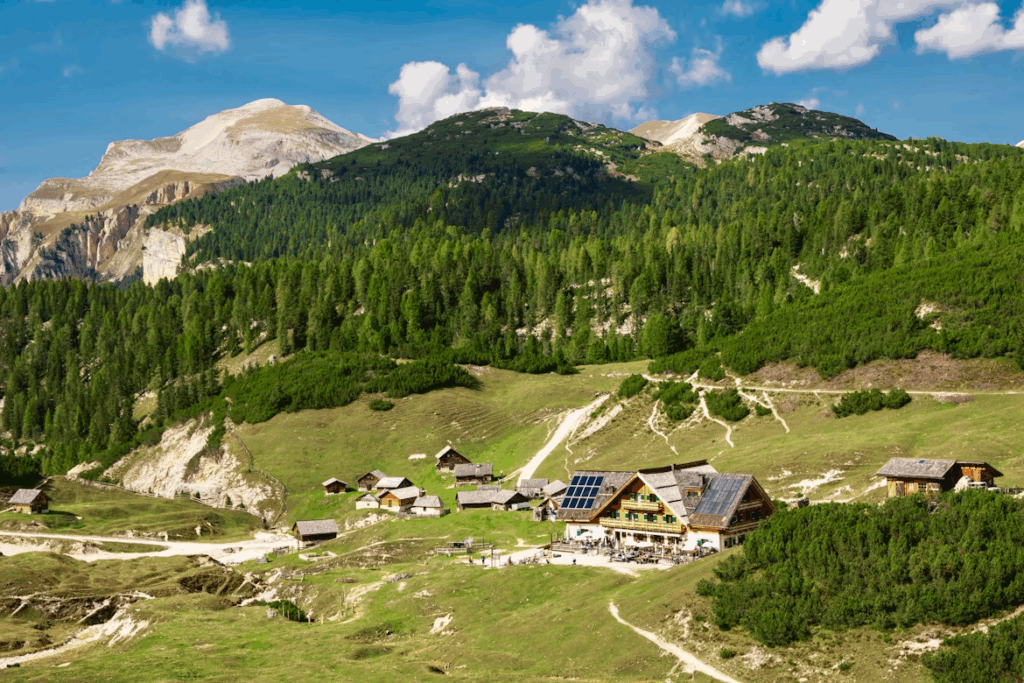
Ranked first on our list, this village in Val Badia serves as a gateway to Ladin heritage, preserving one of Europe’s most unique cultural and linguistic traditions. Fodara Vedla offers visitors insights into the distinctive Ladin culture that has survived in isolated alpine valleys for over a millennium.
Traditional crafts and cuisine reflect the unique cultural blend that characterizes Ladin communities throughout villages in the Italian Alps. Local artisans continue to produce traditional textiles, woodwork, and other crafts using techniques passed down through generations.
The village provides access to numerous hiking trails that explore natural parks and protected areas, offering opportunities to experience pristine alpine environments. Cultural centers and museums in the village provide insights into Ladin history and traditions that remain largely unknown outside the alpine regions.
2. Funes (Val di Funes)
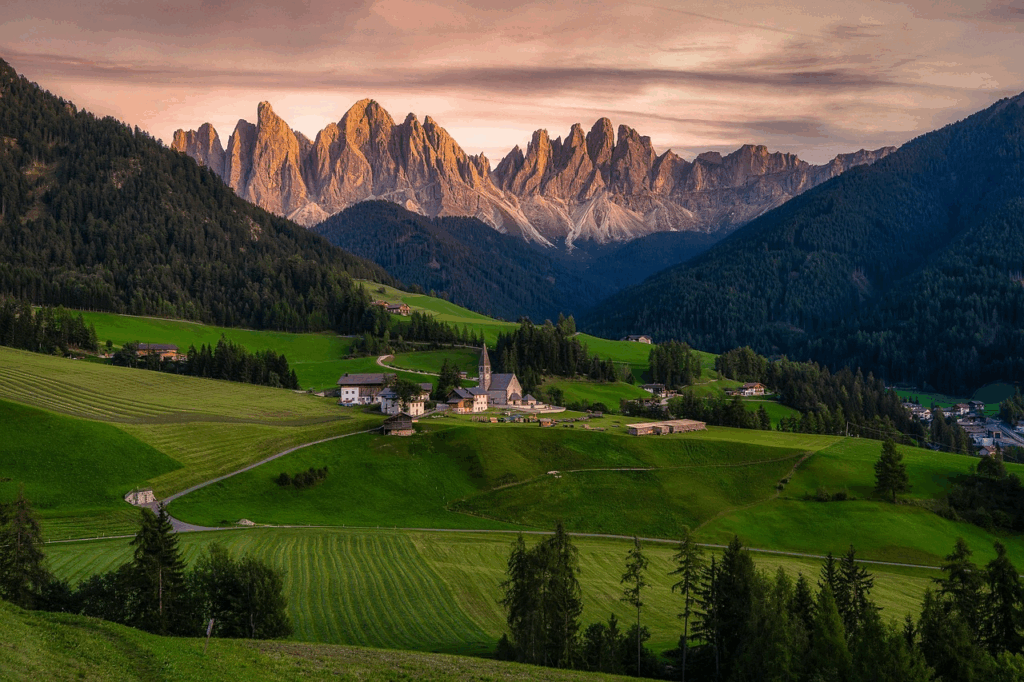
Funes captures the essence of Dolomite beauty with its iconic views of the Odle peaks, creating some of the most photographed landscapes among villages in the Italian Alps. The pastoral setting features traditional farmhouses scattered across emerald meadows, punctuated by Gothic churches that seem to rise directly from fairy tales.
The village serves as a paradise for photographers and nature enthusiasts, offering endless opportunities to capture the interplay between human settlement and dramatic mountain backdrops. Ancient farming traditions continue here, with locals maintaining the alpine pastoral lifestyle that has defined the region for centuries.
Hiking trails from Funes lead directly into the heart of the Dolomites, providing access to some of Europe’s most spectacular mountain scenery. The village’s ability to balance tourism with agricultural heritage creates an authentic experience that defines the best villages in the Italian Alps.
3. Molveno
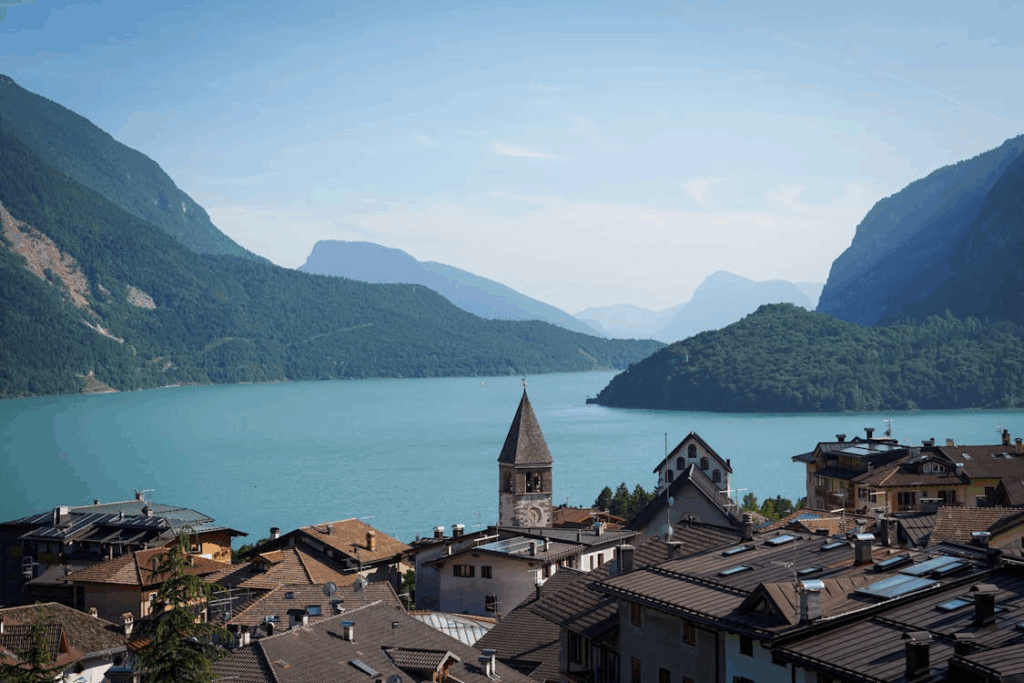
Situated beside one of Italy’s cleanest lakes, Molveno represents the perfect marriage of crystal-clear waters and soaring alpine peaks. This village in the Italian Alps has earned international recognition for its pristine natural environment and exceptional water quality, making it a haven for nature lovers.
The lakeside setting provides opportunities for swimming, kayaking, and sailing during warmer months, while the surrounding mountains offer world-class hiking and mountain biking trails. Traditional alpine architecture frames the lake, creating picture-perfect scenes that embody the charm of villages in the Italian Alps.
Local restaurants serve fresh lake fish alongside traditional mountain specialties, creating a unique culinary experience that reflects both aquatic and alpine influences. The village’s commitment to environmental preservation ensures that future generations will continue to enjoy this pristine alpine paradise.
4. Agordo

Deep in the Belluno Dolomites, Agordo stands as a testament to Venetian alpine culture, blending Italian and Austrian influences in its architecture and traditions. This historic village in the Italian Alps serves as an ideal base for exploring the surrounding natural parks and mountain wilderness.
The village showcases beautiful examples of Venetian-influenced architecture, with colorful facades and ornate balconies that distinguish it from other villages in the Italian Alps. Traditional festivals throughout the year celebrate the unique cultural heritage that developed from centuries of cross-cultural exchange.
Agordo’s strategic location provides access to numerous hiking trails, rock climbing areas, and natural parks that showcase the geological wonders of the Dolomites. The village maintains strong connections to traditional crafts, including woodworking and metalwork that reflect generations of alpine expertise.
5. Martello
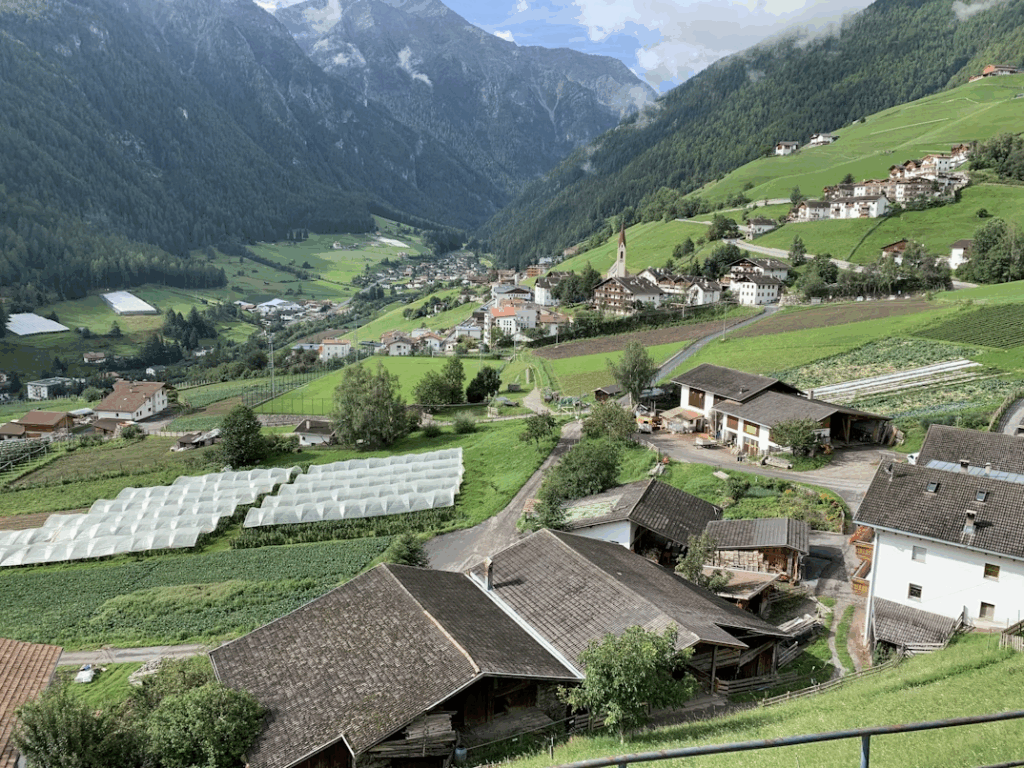
In the heart of South Tyrol, Martello combines Austrian influences with Italian alpine charm, creating a unique cultural blend among villages in the Italian Alps. The village is renowned for its apple orchards, which produce some of Europe’s finest fruit against a backdrop of snow-capped peaks.
Traditional festivals celebrate the apple harvest and other seasonal cycles that have defined life in this village for generations. The combination of agricultural prosperity and stunning mountain scenery creates an idyllic setting that attracts visitors seeking authentic alpine experiences.
Historic buildings showcase the distinctive South Tyrolean architectural style, with wooden balconies and painted facades that reflect the region’s Germanic heritage. The village’s prosperity from apple cultivation has allowed for exceptional preservation of traditional buildings and customs.
6. Ruffré-Mendola
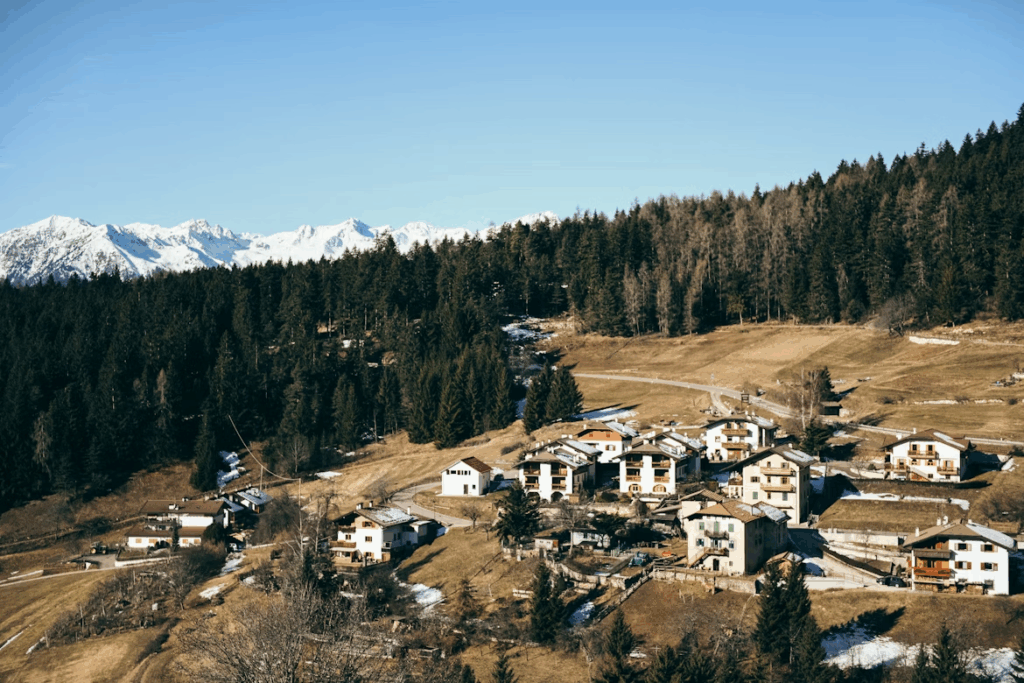
This traditional alpine settlement immerses visitors in vibrant folklore and seasonal celebrations that showcase the living culture of villages in the Italian Alps. Well-preserved mountain homes demonstrate centuries-old building techniques adapted to harsh alpine conditions.
The village’s location provides access to pristine forest environments that remain largely untouched by modern development. Local celebrations throughout the year maintain traditions passed down through generations, offering visitors authentic cultural experiences.
Traditional crafts continue to thrive in Ruffré-Mendola, with local artisans maintaining skills in woodcarving, textile production, and other alpine specialties. The village’s commitment to preserving both architectural and cultural heritage makes it exceptional among villages in the Italian Alps.
7. Lago di Soraga – Moena
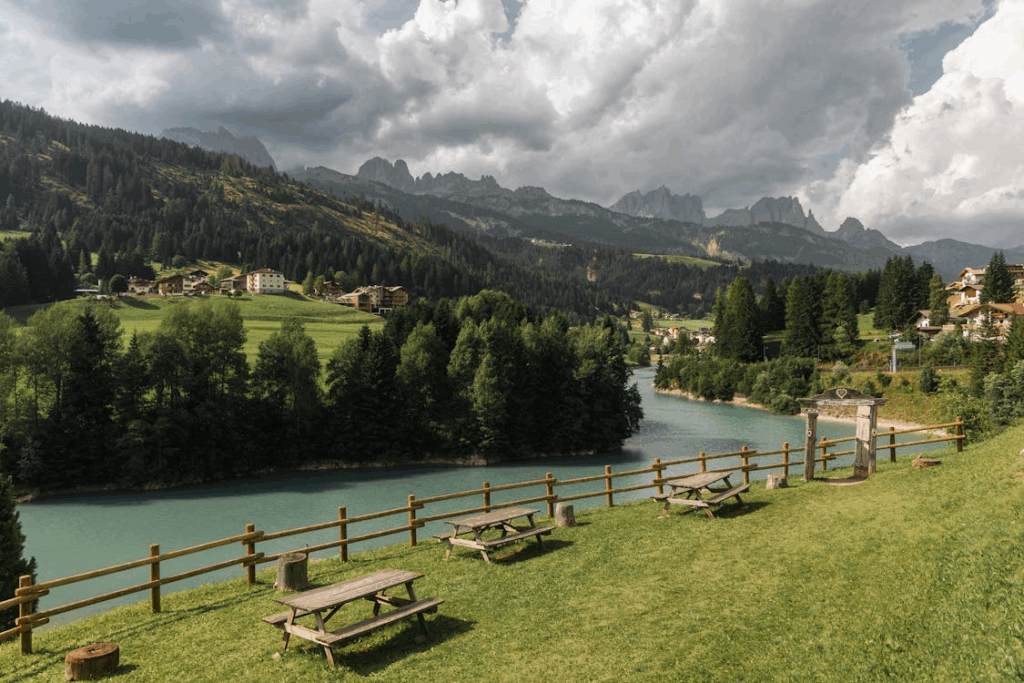
This stunning alpine lake setting creates one of the most dramatic locations among villages in the Italian Alps, where crystal-clear waters perfectly mirror surrounding mountain peaks. The area offers exceptional opportunities for water activities while maintaining the peaceful atmosphere characteristic of traditional alpine settlements.
Hiking trails from the village provide access to high-altitude alpine environments, including pristine meadows and dramatic rocky peaks. The lake’s exceptional water quality supports diverse aquatic life and provides opportunities for sustainable tourism activities.
Local accommodations range from traditional mountain huts to modern eco-friendly hotels, all designed to complement rather than dominate the natural landscape. The area’s commitment to sustainable tourism practices ensures that this pristine environment remains protected for future generations.
8. Trodena
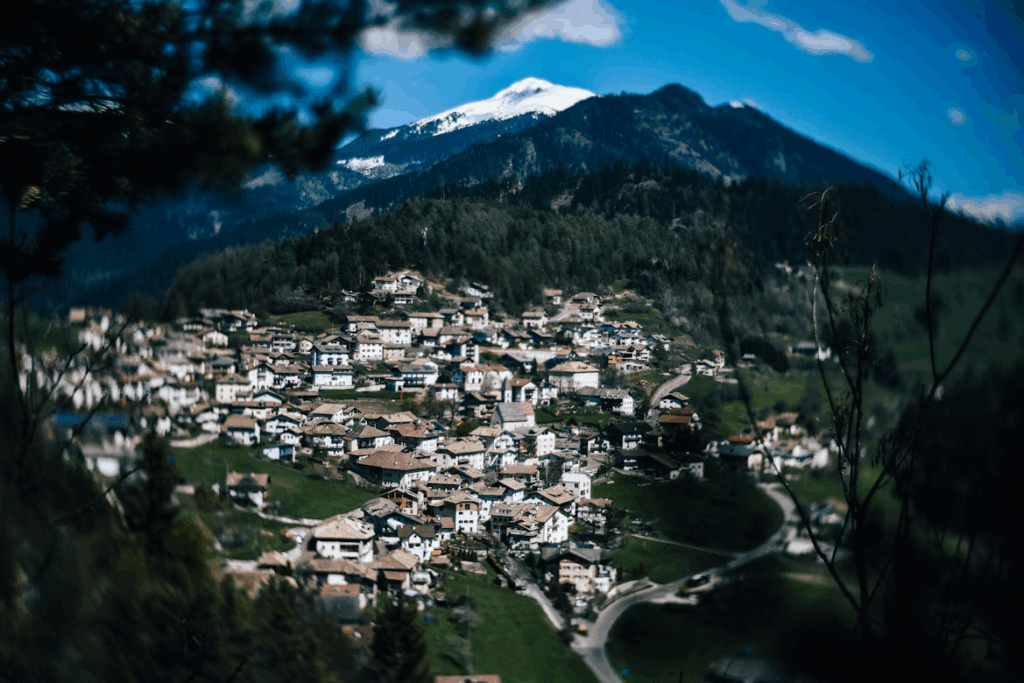
Known for its exceptionally rustic buildings and authentic mountain atmosphere, Trodena offers visitors an unfiltered experience of traditional alpine life. This village in the Italian Alps maintains strong connections to agricultural and pastoral traditions that have shaped mountain communities for centuries.
The surrounding landscape provides access to pristine hiking trails that lead through old-growth forests and high alpine meadows. Wildlife viewing opportunities abound, with chances to observe native species in their natural mountain habitats.
Traditional building techniques remain visible throughout the village, with stone and timber construction methods that reflect centuries of adaptation to alpine conditions. The village’s resistance to modernization creates an authentic time-capsule experience among villages in the Italian Alps.
9. Canale di Tenno

This medieval masterpiece still earns a place among the most photogenic villages in the Italian Alps, with its stone houses connected by ancient archways and narrow cobblestone alleys. Perched dramatically on rocky slopes, Canale di Tenno showcases perfectly preserved alpine architecture that transports visitors back centuries.
The village gained recognition for its artistic heritage, particularly the renowned Casa degli Artisti, where local and international artists display their works. Food enthusiasts flock here to sample “carne salada,” the region’s signature cured meat dish that represents generations of alpine culinary tradition.
Art galleries and workshops line the medieval streets, creating a unique blend of historical preservation and contemporary creativity. The village’s commitment to maintaining its architectural integrity while fostering artistic expression continues to make it a standout destination—even as the last on our list of alpine gems.
Planning Your Visit to Villages in the Italian Alps
The best time to visit these villages in the Italian Alps depends on your preferred activities and experiences. Summer months (June through September) offer ideal conditions for hiking, water sports, and outdoor festivals, while winter provides opportunities for snow sports and cozy alpine experiences.
Transportation between villages typically requires a combination of trains, buses, and private vehicles, as many locations prioritize pedestrian access over automotive convenience. This transportation approach helps preserve the peaceful atmosphere that makes these villages in the Italian Alps so special.
Accommodation options range from traditional mountain inns to modern hotels designed to complement historic architecture. Many villages in the Italian Alps offer agritourismo experiences, where visitors can stay on working farms and participate in traditional alpine activities.
Cultural Experiences in Villages in the Italian Alps
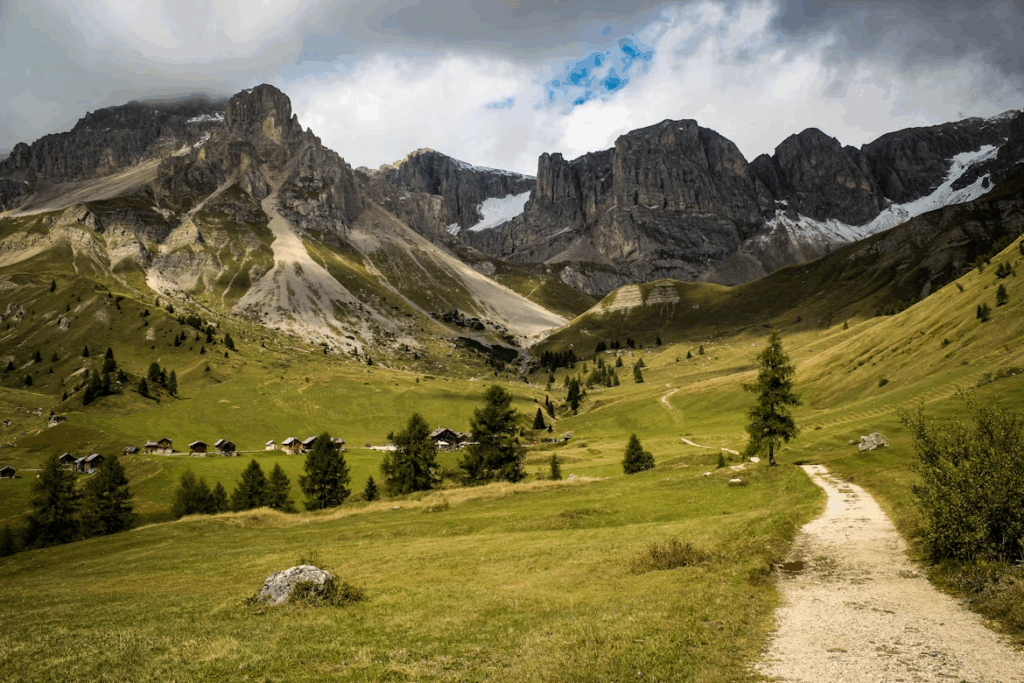
Traditional festivals and seasonal celebrations provide visitors with authentic cultural experiences throughout the year. These events showcase everything from ancient harvest traditions to religious celebrations that have evolved over centuries in isolated mountain communities.
Culinary experiences in villages in the Italian Alps often center around locally produced ingredients, including cured meats, alpine cheeses, and seasonal produce. Many villages maintain traditional food preparation methods that create unique flavors impossible to replicate elsewhere.
Craft workshops and demonstrations allow visitors to learn traditional skills from local artisans who continue ancestral practices. These hands-on experiences provide deeper understanding of the cultural heritage that defines villages in the Italian Alps.
Architecture and Historical Significance
The architectural heritage found in villages in the Italian Alps represents centuries of adaptation to mountain climates and local building materials. Stone construction dominates lower elevations, while timber frame buildings characterize higher alpine settlements, creating a diverse architectural landscape throughout the region.
Medieval influences remain particularly strong in villages like Canale di Tenno, where stone archways and narrow alleys create an authentic historical atmosphere. These architectural elements weren’t merely aesthetic choices but practical solutions to alpine challenges, including heavy snow loads, strong winds, and temperature fluctuations.
Gothic churches scattered throughout villages in the Italian Alps showcase the religious heritage that helped shape these communities. Many of these structures feature unique alpine adaptations, including steep roofs designed to shed snow and thick walls that provide insulation during harsh winters.
For official tourism resources and detailed planning information, Italy’s tourism website provides extensive coverage of Trentino’s beautiful villages with practical visitor guidance.
Traditional Crafts and Artisan Heritage
Villages in the Italian Alps maintain living traditions of craftsmanship that have been passed down through generations of mountain dwellers. Woodcarving remains particularly significant, with local artisans creating everything from decorative household items to structural building elements using techniques refined over centuries.
Textile production in these mountain communities often incorporates wool from local sheep, creating warm, durable fabrics adapted to alpine conditions. Traditional patterns and techniques continue to influence contemporary designs, maintaining cultural continuity while adapting to modern markets.
Metalworking traditions in villages in the Italian Alps developed from the need to create and maintain agricultural and household tools in isolated mountain environments. Local blacksmiths and metalworkers continue to practice these essential crafts, often combining traditional techniques with modern applications.
Seasonal Rhythms and Agricultural Traditions
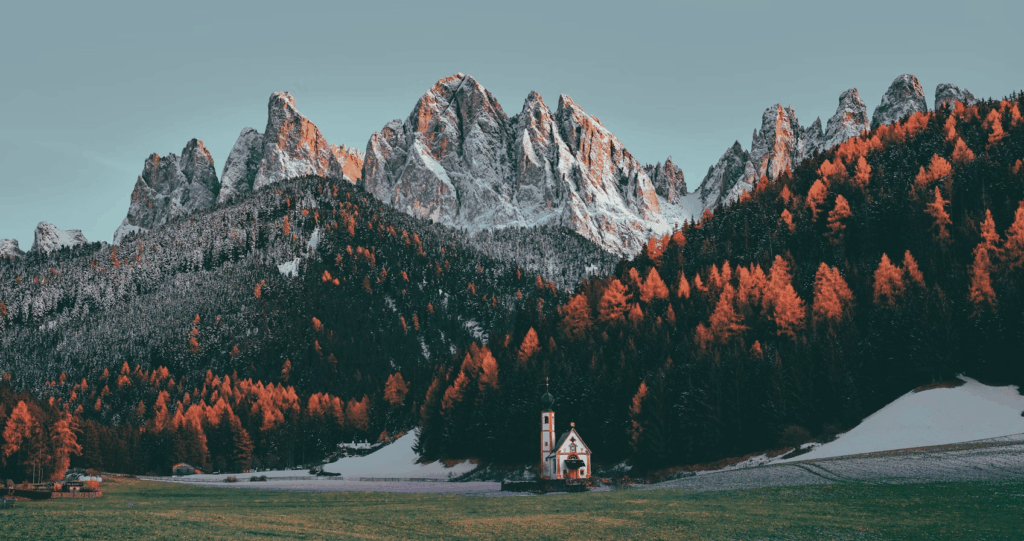
Life in villages in the Italian Alps follows ancient seasonal rhythms that continue to influence daily activities and cultural celebrations. Spring brings the movement of livestock to higher pastures, a tradition called transhumance that has shaped alpine landscapes and communities for millennia.
Summer months represent the peak of agricultural activity, with hay harvesting, garden cultivation, and livestock management consuming most daylight hours. These seasonal patterns create opportunities for visitors to witness traditional farming practices that remain largely unchanged in many villages in the Italian Alps.
Autumn harvest festivals celebrate the completion of the agricultural year, featuring traditional foods, music, and customs that reflect the community bonds essential for survival in harsh mountain environments. These celebrations provide authentic cultural experiences that showcase the enduring traditions of villages in the Italian Alps.
Winter months traditionally focused on indoor activities like crafts production, equipment maintenance, and community gatherings that strengthened social bonds during the challenging cold season. Modern villages in the Italian Alps continue many of these traditions while adapting to contemporary tourism opportunities.
Culinary Heritage and Local Specialties
The distinctive cuisine found in villages in the Italian Alps reflects both the limitations and opportunities presented by mountain environments. Traditional preservation techniques, including smoking, curing, and fermentation, created unique flavors while ensuring food security during long winters.
Dairy products hold special significance in villages in the Italian Alps, where high-altitude pastures produce milk with exceptional flavor characteristics. Local cheeses often reflect specific microclimates and grazing areas, creating products that are literally impossible to replicate elsewhere.
Cured meat specialties like the “carne salada” of Canale di Tenno demonstrate how villages in the Italian Alps developed distinctive preservation methods suited to local conditions. These traditional techniques continue to produce sought-after delicacies that attract culinary enthusiasts from around the world.
Apple cultivation in South Tyrolean villages represents the successful adaptation of fruit production to alpine conditions. The combination of mountain climate, soil conditions, and traditional cultivation methods creates apples with exceptional flavor and storage characteristics.
Wildlife and Natural Ecosystems
The natural environments surrounding villages in the Italian Alps support diverse wildlife communities that have adapted to mountain conditions over thousands of years. These ecosystems provide opportunities for wildlife observation while maintaining the delicate balance between human settlement and natural habitats.
Alpine meadows around villages in the Italian Alps burst into spectacular wildflower displays during brief mountain summers. These high-altitude grasslands support specialized plant communities found nowhere else, creating botanical wonderlands that attract nature enthusiasts and researchers.
Forest ecosystems near villages in the Italian Alps provide essential resources including timber, wild foods, and watershed protection. Traditional forest management practices developed by mountain communities created sustainable systems that continue to benefit both human settlements and wildlife populations.
High-altitude environments above villages in the Italian Alps support specialized wildlife including ibex, chamois, and golden eagles. These species represent the successful adaptation of life to extreme mountain conditions and provide exceptional wildlife viewing opportunities for visitors.
Sustainable Tourism in Villages in the Italian Alps
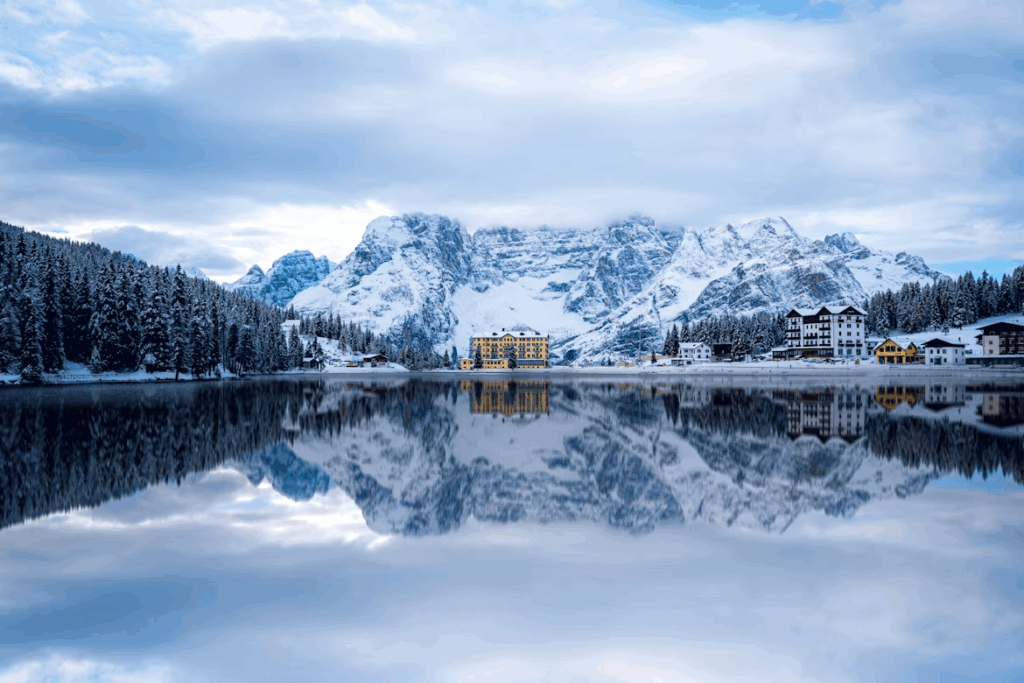
Many villages in the Italian Alps have embraced sustainable tourism practices that protect their cultural heritage and natural environments while providing economic opportunities for local communities. These approaches serve as models for responsible mountain tourism worldwide.
Local initiatives focus on preserving traditional building techniques, supporting local artisans, and maintaining agricultural practices that have shaped these mountain landscapes for generations. Visitors can support these efforts by choosing locally owned accommodations and purchasing traditional crafts directly from artisans.
Environmental protection efforts ensure that the pristine natural settings that make villages in the Italian Alps so special remain intact for future generations. These conservation programs often involve collaboration between local communities, environmental organizations, and government agencies.
Conclusion
The villages in the Italian Alps represent a unique blend of cultural heritage, architectural beauty, and natural splendor that creates unforgettable travel experiences. From medieval Canale di Tenno to pristine Molveno, each destination offers visitors the opportunity to connect with authentic alpine traditions while enjoying some of Europe’s most spectacular mountain scenery.
These carefully preserved communities demonstrate how traditional ways of life can coexist with responsible tourism, creating sustainable models that benefit both visitors and local residents. Whether you’re drawn by the promise of outdoor adventures, cultural discoveries, or simply the peace of mountain life, villages in the Italian Alps deliver experiences that linger long after your visit ends.
The commitment of these communities to preserving their heritage while welcoming visitors creates opportunities for meaningful cultural exchange and understanding. As you plan your journey through these remarkable destinations, you’ll discover that villages in the Italian Alps offer far more than beautiful scenery – they provide windows into ways of life that have thrived in harmony with mountain environments for countless generations.
For those inspired by pristine natural environments and traditional communities, you might also enjoy exploring kayaking opportunities in Norwegian fjords, which offer similarly spectacular mountain-water combinations. Additionally, travelers interested in coastal village charm should consider visiting the charming fishing villages along the Pacific coast for a different perspective on traditional community life.

